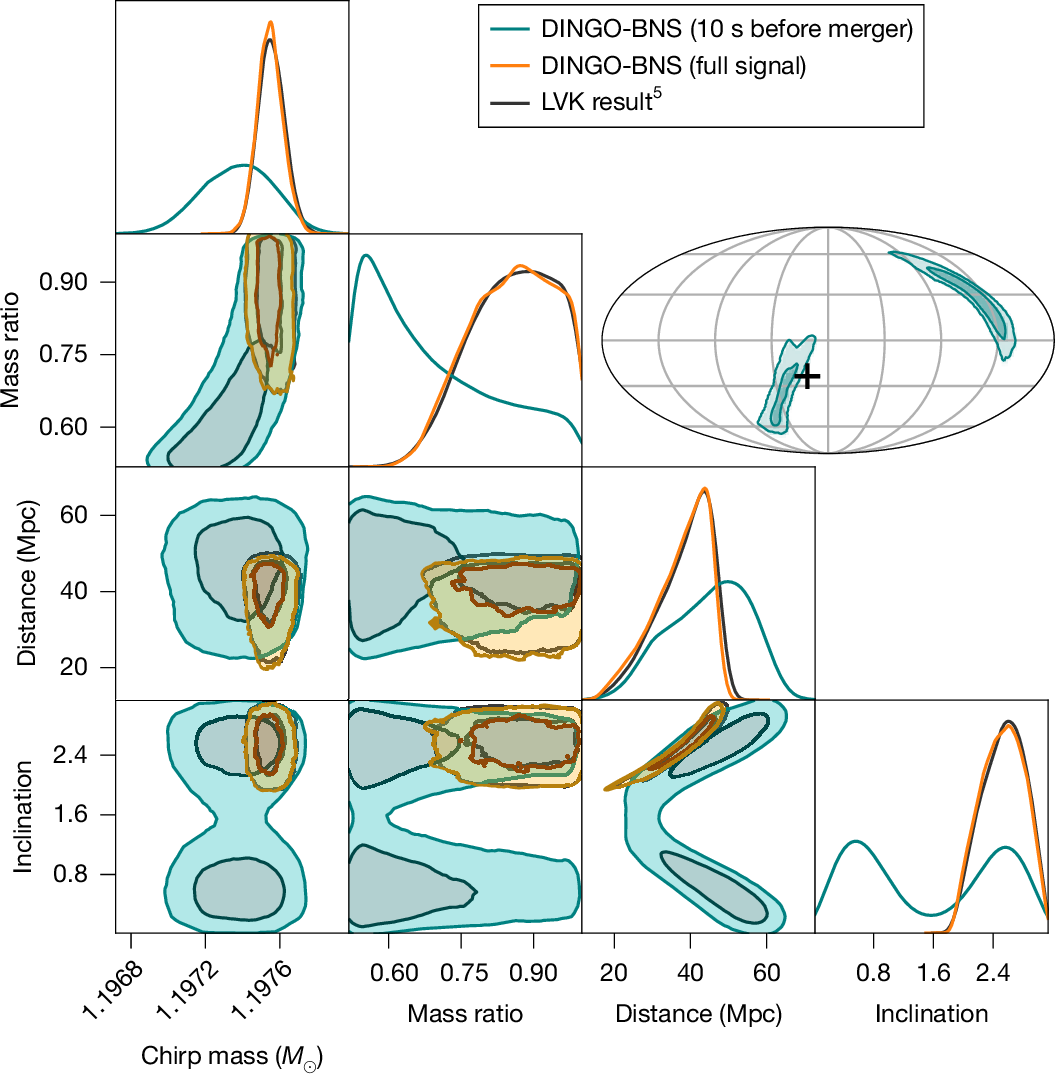2025-03-06 ロードアイランド大学(URI)
<関連情報>
- https://www.uri.edu/news/2025/03/machine-learning-algorithm-analyzes-gravitational-waves-from-merging-neutron-stars-in-the-blink-of-an-eye/
- https://www.nature.com/articles/s41586-025-08593-z
機械学習による連星中性子星合体のリアルタイム推論 Real-time inference for binary neutron star mergers using machine learning
Maximilian Dax,Stephen R. Green,Jonathan Gair,Nihar Gupte,Michael Pürrer,Vivien Raymond,Jonas Wildberger,Jakob H. Macke,Alessandra Buonanno &Bernhard Schölkopf
Nature Publishe:d05 March 2025
DOI:https://doi.org/10.1038/s41586-025-08593-z

Abstract
Mergers of binary neutron stars emit signals in both the gravitational-wave (GW) and electromagnetic spectra. Famously, the 2017 multi-messenger observation of GW170817 (refs. 1,2) led to scientific discoveries across cosmology3, nuclear physics4,5,6 and gravity7. Central to these results were the sky localization and distance obtained from the GW data, which, in the case of GW170817, helped to identify the associated electromagnetic transient, AT 2017gfo (ref. 8), 11 h after the GW signal. Fast analysis of GW data is critical for directing time-sensitive electromagnetic observations. However, owing to challenges arising from the length and complexity of signals, it is often necessary to make approximations that sacrifice accuracy. Here we present a machine-learning framework that performs complete binary neutron star inference in just 1 s without making any such approximations. Our approach enhances multi-messenger observations by providing: (1) accurate localization even before the merger; (2) improved localization precision by around 30% compared to approximate low-latency methods; and (3) detailed information on luminosity distance, inclination and masses, which can be used to prioritize expensive telescope time. Additionally, the flexibility and reduced cost of our method open new opportunities for equation-of-state studies. Finally, we demonstrate that our method scales to long signals, up to an hour in length, thus serving as a blueprint for data analysis for next-generation ground- and space-based detectors.



